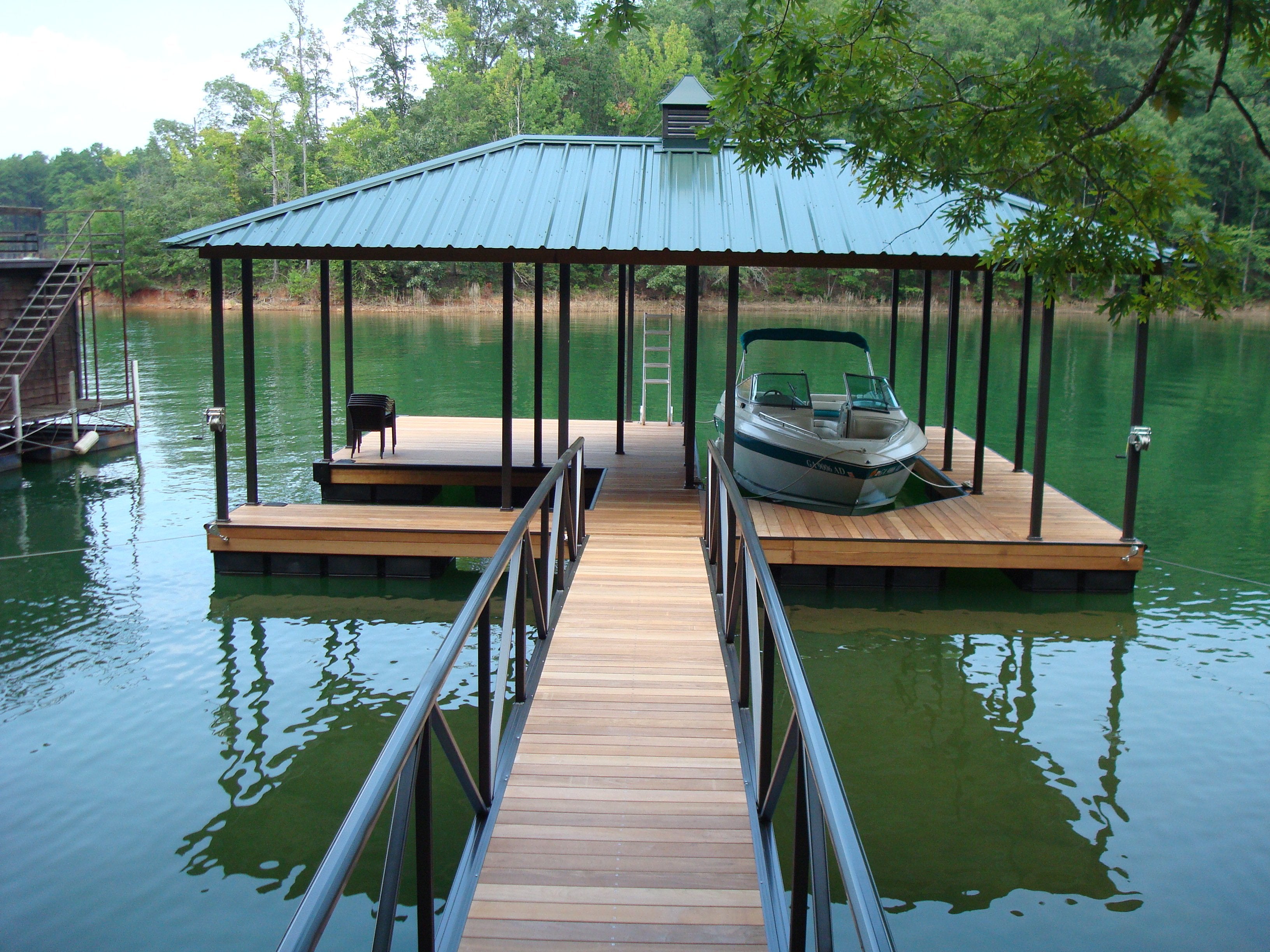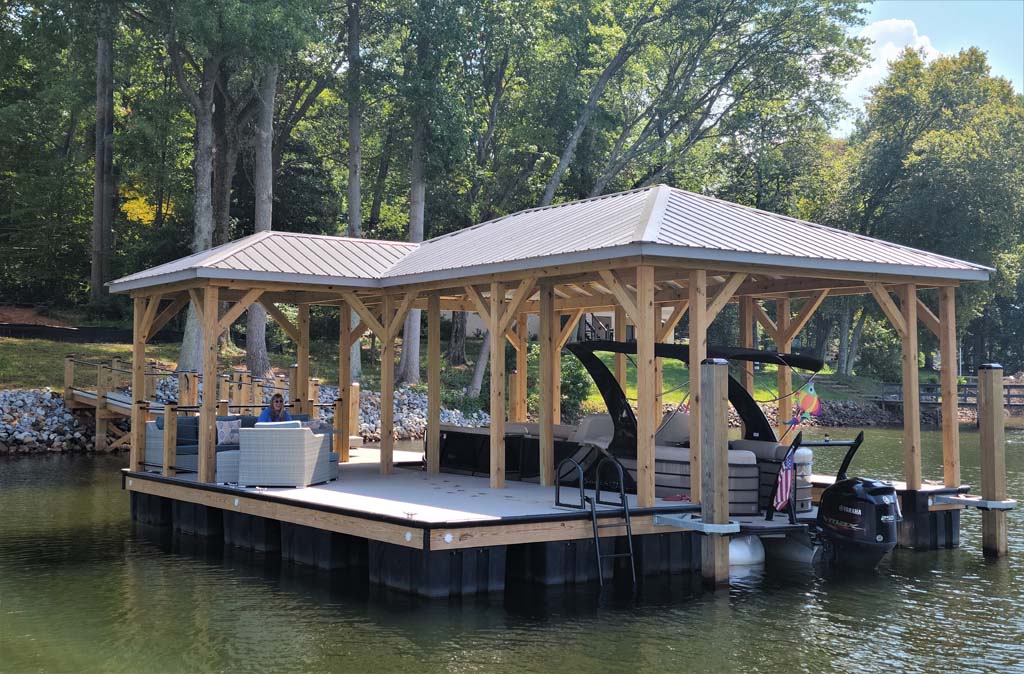Your Overview to Finding the Best Dock Company for High Quality and Dependability
Your Overview to Finding the Best Dock Company for High Quality and Dependability
Blog Article
Produce the Perfect Docking Solution With Floating Docks
Floating docks present a versatile solution for a selection of maritime needs, adapting effortlessly to fluctuating water levels and varied vessel kinds. As we check out the necessary components that contribute to the effectiveness of floating docks, a number of key elements pertaining to security and upkeep will emerge, elevating questions about exactly how to optimize your docking experience.

Advantages of Floating Docks
Floating docks deal countless advantages that make them an excellent option for numerous maritime applications. One of the key benefits is their adaptability to changing water levels. Unlike dealt with docks, floating docks surge and loss with the trend, guaranteeing consistent access for vessels. This feature is particularly important in areas vulnerable to considerable tidal changes or seasonal water level modifications.
In addition, floating docks are usually easier and quicker to set up contrasted to traditional fixed frameworks. Their modular style permits for uncomplicated setting up and disassembly, promoting maintenance and moving when needed. This versatility is especially valuable for momentary applications or in environments where conditions might change.
Floating docks also often tend to be a lot more environmentally pleasant, as they minimize disruption to the seabed and surrounding aquatic ecological communities. Their buoyant nature lowers the danger of damages to aquatic life, advertising a much healthier environment. Furthermore, these docks can be customized to fit various vessel dimensions, making sure that they satisfy specific functional demands - dock company.
Inevitably, the combination of flexibility, ease of installment, and environmental considerations makes floating docks a highly effective solution for a vast array of maritime needs.
Selecting the Right Products
Selecting the suitable products for floating docks is important to make certain security, longevity, and longevity. The selection of products straight affects the dock's efficiency in various environmental conditions, consisting of exposure to water, sunlight, and potential wear from aquatic web traffic.
Typical products made use of for floating docks consist of light weight aluminum, timber, and high-density polyethylene (HDPE) Light weight aluminum is light-weight, corrosion-resistant, and needs very little upkeep, making it an excellent choice for longevity. However, its preliminary expense can be higher compared to other materials.
Wood, while visually attractive and providing a conventional look, can be vulnerable to rot and insect damages otherwise properly dealt with. Making use of pressure-treated timber or naturally sturdy species like cedar or redwood can mitigate these concerns.
HDPE is a preferred selection because of its resistance to UV rays and chemicals, along with being environmentally friendly. floating dock builder. It is readily available and light-weight in different colors, permitting personalization
Inevitably, the best material selection will certainly depend on details demands, consisting of budget plan, wanted aesthetics, and ecological factors to consider. Cautious examination of these factors will certainly result in a resilient and effective floating dock service.
Design Factors To Consider for Stability
When developing floating docks, making sure stability is an essential facet that can considerably sites influence their performance and safety and security. Security in floating dock layout is influenced by numerous elements, including buoyancy, weight circulation, and the plan of elements.
Weight circulation is crucial; uniformly dispersing loads across the dock avoids tilting and enhances stability. This can be achieved through calculated placement of docking devices, such as fenders and cleats, along with appropriate spacing of drifts. Additionally, the dimensions of check over here the dock should be attentively planned. Broader styles can provide increased stability, specifically in harsh water conditions, while longer docks might require additional assistances to avoid drooping.
One more crucial consideration is the ecological impact, consisting of wave activity and wind. Integrating features such as sidewalls or skirting can aid minimize the results of ecological forces, keeping stability in negative conditions. Inevitably, a combination of thoughtful layout, product choice, and understanding of environmental aspects will produce a drifting dock that meets both security and security requirements.
Installation Tips and Strategies

Following, secure the needed permits and follow neighborhood policies, which might determine setup approaches and environmental factors to consider. If needed, involve a certified service provider experienced in floating dock installments. Usage top quality products made for aquatic atmospheres to enhance toughness and durability.
When positioning the dock, align it alongside the coastline to assist in easy accessibility. Ensure that the anchoring system is robust, employing concrete blocks or helical supports to support the dock versus wind and wave action. It's critical to make up seasonal water degree changes, consisting of possible ice motion in chillier climates.
During the installation, double-check the dock's floatation and security prior to wrapping up the anchoring. Routinely examine the setup for any kind of signs of wear or damage. By adhering to these pointers and strategies, you can achieve a protected, functional, and aesthetically pleasing floating dock installment that meets your requirements.
Upkeep and Care Standards
Preserving and caring for floating docks is crucial to lengthening their life-span and ensuring secure usage. Routine assessments should be performed to recognize any signs of wear, damage, or marine development. Look for fractures, loosened installations, or tarnished locations on the dock's surface, as these concerns can compromise structural integrity.
Cleansing is vital. Use a stress washing machine to get rid of algae, barnacles, and particles, which can accumulate gradually. For stubborn development, think about eco-friendly cleaner that will not damage water life.
Additionally, inspect the mooring lines and supports often to guarantee they are visit this web-site protected and cost-free from rust. Change any type of frayed or damaged lines quickly to maintain security.
During extreme weather condition, such as tornados or freezing problems, take preventive measures. Safeguard the dock with extra mooring lines and, if possible, eliminate any removable elements to stop damages.
Final Thought
In verdict, the implementation of floating docks presents a flexible and effective docking option appropriate for various maritime applications. With correct setup and routine maintenance, floating docks can offer trusted and effective docking experiences for a wide variety of vessels.
As we explore the crucial elements that contribute to the effectiveness of floating docks, numerous crucial elements concerning security and upkeep will certainly emerge, increasing questions about just how to optimize your docking experience. Unlike taken care of docks, floating docks rise and loss with the tide, guaranteeing regular availability for vessels.When designing floating docks, guaranteeing stability is an essential element that can significantly impact their capability and safety and security. Stability in floating dock layout is affected by different factors, consisting of buoyancy, weight distribution, and the setup of components. Eventually, a combination of thoughtful layout, material choice, and understanding of ecological elements will certainly generate a floating dock that fulfills both security and safety and security needs.
Report this page